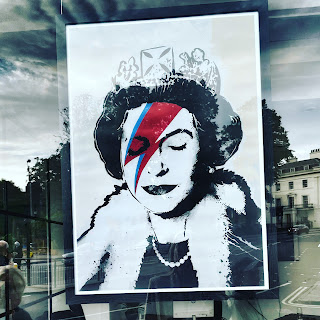Hidden Figures - A Review
A few weeks ago, my husband and I were very honored to have been invited by dear friends to the USC Scripter Awards. That evening, we struck up a conversation with a couple we encountered in one of the Library exhibits. Later, as the awards ceremony got underway, I realized that the woman with whom I'd so enjoyed discussing evening gowns and Virginia and Mexico was Margot Lee Shetterly, the author of the book, Hidden Figures. She was at the Scripter Awards as an honoree, along with the screenwriter for the film based on her work, which my family had just seen two nights before.
After dinner, Ed and I sought Margot and her husband Aran again so I could properly gush about her work. I had loved the movie, Hidden Figures - a deft weaving together of the threads from three of the women's lives, layered in the subtle and glaring racism, and painting a vivid picture of life as an educated, professional black woman in the early 1960s - but after the conversations we had with Margot and Aran, I was inspired to read the book.
I read on a kindle for 3am wake-ups, but I also splurged on the whispersync audiobook so I could listen while I drove, walked the dog, and cooked dinner. My younger son caught several parts of it on our drives to and from swim practice, and we sometimes sat in the car long after arriving home to finish the chapter. My older son heard the book on the way home from robotics, with the same fascination for the science and possibilities of the future that had gripped the women at NASA.
Hidden Figures is a story about being black in America during a time of social upheaval, when resistance to change was almost as strong as the resistance to affect change. It's a story about being a woman in a world that needed women to work during the war, and then pushed back when they wanted to keep working. It's a story about fighting for an education in a world that offered few opportunities to those who weren't white and male. And it's a story about the grace, strength, and fierce determination it took to be a black women with math, science, and engineering skills, and a desire to make a difference to their country, their community, and their families, in a world that could only see their gender and the color of their skin.
“Women, on the other hand, had to wield their intellects like a scythe, hacking away against the stubborn underbrush of low expectations.”
Margot Lee Shetterly spent six years peeling back the layers of their stories and reassembling them into a book that was bigger than the women and their journey, and yet so intimate and personal it felt like being allowed into someone's living room to listen to their tale first-hand. She then took the stories of the women and placed them against the backdrop of a time in America that our contemporary eyes can look back on with wonder and nostalgia, but also see, with deep, abiding shame, the injustice, the discrimination, the blatant racism that riddled the integrity of our democracy, as if the very foundation of our freedom was run through like wormwood.
"Who knew American democracy more intimately than the Negro people? They knew democracy’s every virtue, vice, and shortcoming, its voice and contour, by its profound and persistent absence in their lives. The failure to secure the blessings of democracy was the feature that most defined their existence in America."
One of the most striking elements of the book, which also permeated the film to great effect, was the unrelenting grace with which the women faced the adversities that seemed to come from every possible direction. In the face of educational discrimination, inherent workplace sexism, and overt racism, the black female mathematicians and engineers comported themselves with exceptional strength and dignity. The women knew that every step forward they took was one more step forward for their community, and any misstep could have the potential to set the community back with just as much impact.
Margot Lee Shetterly wrote an exceptional book. Her choice of language, her expression of ideas, her weaving of personal stories through the grand tapestry of the history of NASA - all were exquisitely wrought and vividly shared with the reader. Hidden Figures opened a door to a time I only knew by reputation, and it spoke its secrets with directness and honesty. And through the women's stories, the idea that stood out as a beacon among all the shining starpoints of light was at the heart of all that Hidden Figures stood for:
“Katherine Johnson knew: once you took the
first step, anything was possible.” - Margot Lee Shetterly, Hidden Figures



